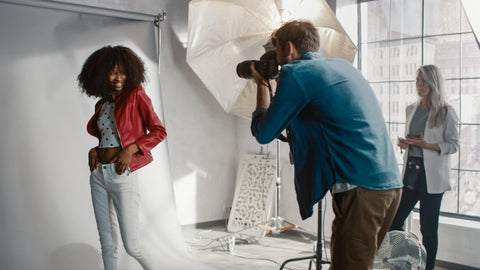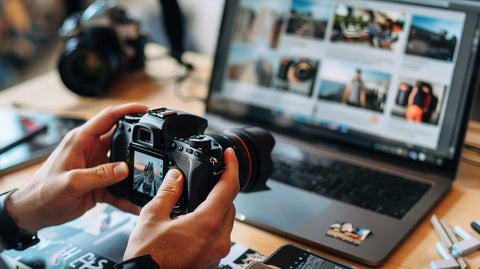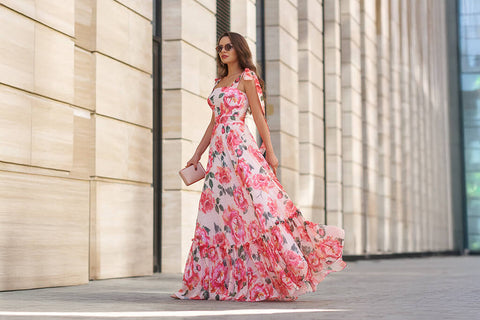- Lightroom Presets
- Mobile Presets
-
Photoshop
-
Learn
-
Support
-
Install
- Best Sellers
- Blog
By Gayle Vehar on | No Comments

Lightroom Classic and Adobe Camera Raw have been sharing presets for several years, and I LOVE this feature. This means that if I install presets into recent versions of Lightroom Classic, they are automatically added to Photoshop's Adobe Camera Raw. Because of this, I use ACR and presets more often when I edit in Photoshop.
However, Adobe has kept the Masking Presets (formerly known as Brush Presets) in the older .lrtemplate format, meaning they DO NOT automatically install into ACR. As a result, I looked for a "work-around" solution to make this a reality.
In Lightroom Classic, masks are used in combination with adjustment brushes, graduated filters, and radial filters to selectively apply edits to specific parts of an image. Since the same settings are often used over and over by portrait photographers, Pretty Presets has created beautiful presets to help you save time and edit faster. These presets are included with several of our collections (Clean Edit Portrait Workflow and Bella Baby Newborn Presets & Brushes) or available in a stand-alone Retouch & Makeup Brushes Collection.
If you are like me and LOVE your local adjustment presets and want access to them in Adobe Camera Raw, follow the steps below to get them over there, too.
Please know that these steps are a "workaround," so they will require a little bit of work—this isn't a built-in, quick transfer. Hopefully, in the future, Adobe will create a more straightforward way to share local adjustment presets between Lightroom Classic and Adobe Camera Raw.
To get started, you must select a RAW or DNG file to work with. Ideally, choose a file with some space (i.e. a sky) where you can place some masks, and they will be easy to see.
Next, click on the Masking icon. You'll find it in the toolbar just above the Basic Panel. The Masking icon looks like a circle with a dotted outline.
From the options that open, choose the Brush tool.

For this next step, you are going to set the brush size to 3 and choose a preset that you want to move to ACR from the Preset drop-down menu. I am choosing to move my Bella Baby Collection brushes, so I chose one of those. Start from the first preset in the collection.

Now, click somewhere on your image. I suggest picking a spot at the top because you are going to have MANY brush pins on your image in a second.
Last, you will want to rename the mask you created to the name of the brush preset you just applied. To do this, double-click on the mask you just created (by default, it is likely called "Mask 1"). A box will open where you can type the name of the preset you applied. Click "OK" when you are done.

Now, repeat Step 3 for as many presets as you want to move over to ACR. The good news is that you won't need to set the brush size each time. There are 20 brush presets in the Bella Baby Collection, so I repeated the above step 20 times.
This will require about a 15 minute time commitment for that many brushes. However, if you use ACR often, these 15 minutes will save you MUCH time in the future, so consider it an investment.

For this step, you are simply going to press CTRL/CMD+S. This will force Lightroom to save the masks into an XMP file. You will need this when you open the image over in ACR.
When you do this, Lightroom will pop up a warning asking you if you want to "Save metadata to file?" and you should choose "Continue."

The rest of these steps will take place in Adobe Camera Raw, so we will need to open the file over there. The easiest way to do this is to right-click on the image in the filmstrip and choose "Open in Finder. If you are on a Windows computer, choose "Open in Explorer."
A Finder or Explorer window will open with the RAW file highlighted—Double-click on that file to open it in Photoshop's ACR.

Now that your image is open in Adobe Camera Raw, this last step will be where you create the preset in ACR. To do this, click the Masking icon on the right side of ACR. The icon will look the same as in Lightroom—a circle with a dotted outline.

Once you click the icon, you will see all your masks in the Masks panel. Simply highlight the top mask and choose "New Adjustment Preset" from the preset drop-down menu.

A window will open, allowing you to give the new preset a name. Type the name of the preset in the box. You will be able to see the name of the preset grayed out on the right because you named the layer the name of the preset, so there is no need to memorize which preset you are making.
Repeat this step for each layer showing in your Masks panel. If you have made it this far, your hard work has been rewarded with a new collection of brush presets you can now use in ACR.
The obvious answer is, "Not that I know of!" If I knew of an easier way, I would certainly tell you. If YOU know of a better way, I'd love for you to share it with us in the comments. Hopefully, Adobe will make this process more straightforward in the future. Masks are such a vital editing tool in Lightroom that I definitely want to have access to them whenever I am editing in ACR. If you found this tutorial, I am guessing you want this functionality, too!
Do you have any questions or comments about How to Move Lightroom Classic Masking Presets to Adobe Camera Raw (ACR)? Leave us a comment below - We would LOVE to hear from you! And PLEASE SHARE this post using the social sharing buttons (we really appreciate it)!




Hi!! I am Gayle. I am a wife to my handsome husband and mom to 4 beautiful kids. In my spare time, I am a photographer and blogger at Mom and Camera. I have a passion for sharing my love of photography with others. I teach local photography classes and regularly share photography tips and tricks on my blog. I hang out there a lot—I’d love you to stop by and visit!

Comments